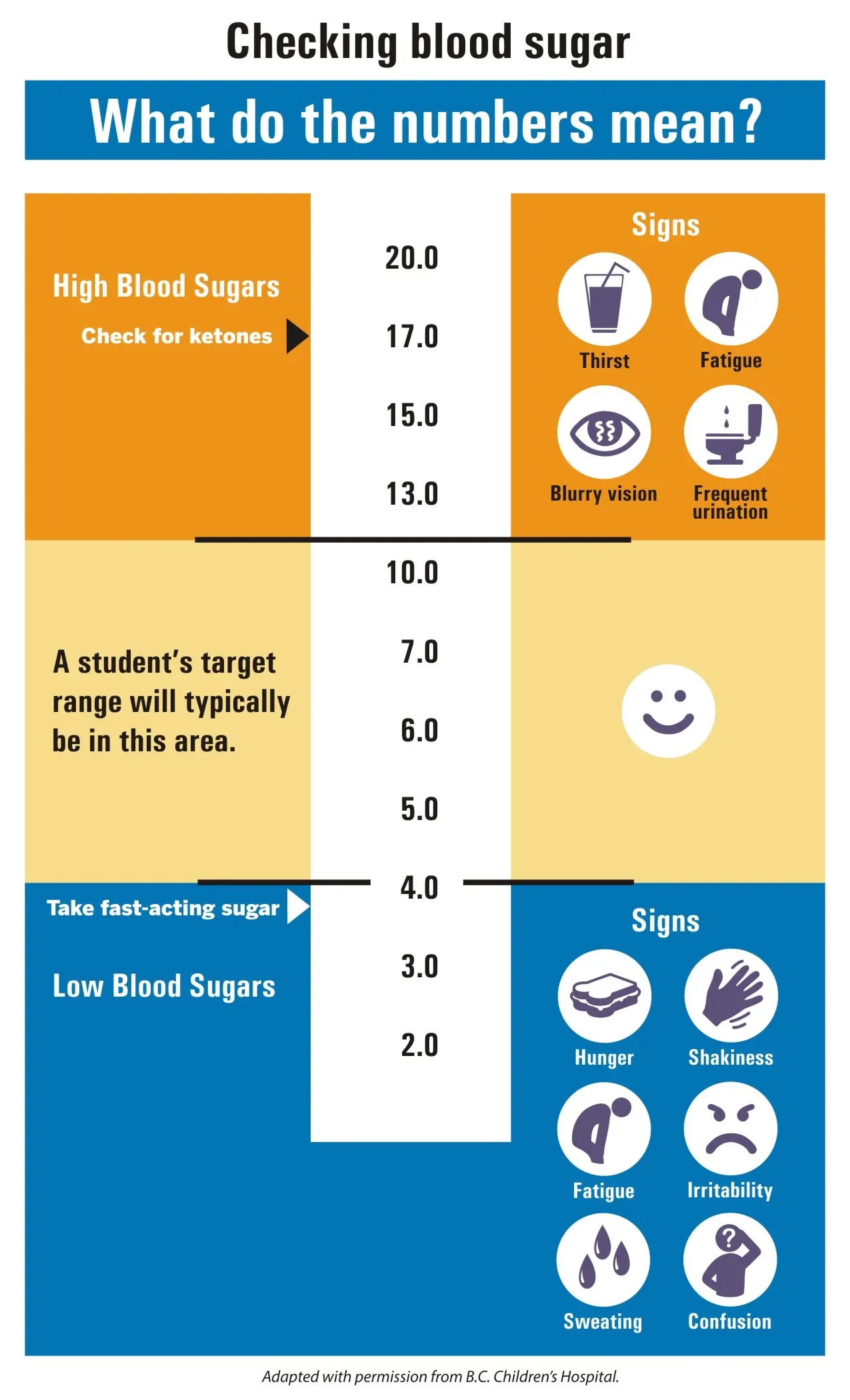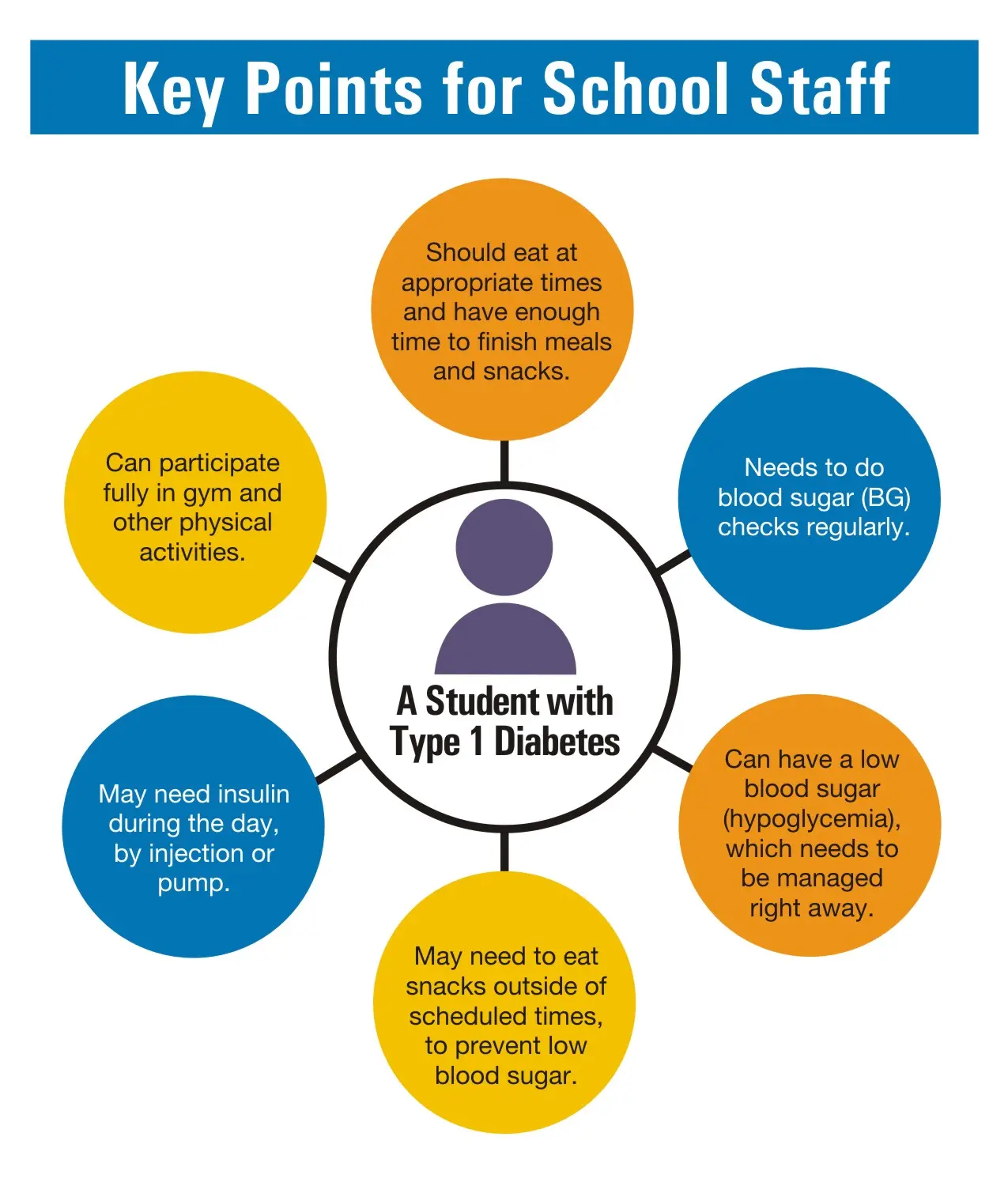
Type 1 diabetes: An overview
There are several different types of diabetes. Among children and youth, type 1 is the most common. About 1 in 300 children have type 1 diabetes.
Type 1 diabetes is a condition where the pancreas stops producing insulin. Insulin is a hormone that helps your body control the level of glucose—or sugar—in your blood.
Your body produces glucose, and also gets glucose from foods that contain carbohydrates—such as bread, potatoes, rice, pasta, milk and fruit.
Without insulin, glucose builds up in your blood instead of being used by your cells for energy. Symptoms of undiagnosed type 1 diabetes include:
- Increased thirst
- Increased urination
- A lack of energy
- Weight loss
A person with type 1 diabetes must take insulin either by injections or through an insulin pump.
Watch our video Type 1 Diabetes: The Basics For Teachers & School Staff for an overview of type 1 diabetes.
Remember
Type 1 diabetes is not caused by eating too much sugar. It cannot be prevented.
What causes type 1 diabetes?
The cause of type 1 diabetes is not known. What we do know is that type 1 diabetes is not caused by eating too much sugar. It cannot be prevented. Type 1 diabetes is currently understood as an auto-immune disease, meaning the body’s immune system destroys the cells that produce insulin.

What is it like to manage type 1 diabetes every day?
A healthy pancreas automatically releases just the right amount of insulin to keep blood sugar in a healthy range. It is constantly adjusting, minute to minute, responding to how much food we eat, activity, stress levels, and other factors. The pancreas is a very complex organ.
Doing the job of the pancreas is very difficult. It is impossible to have that perfect minute-to-minute adjustment. No matter how closely they manage their disease, people with type 1 diabetes can still experience swings in their blood sugar levels.
People with diabetes must check their blood sugar several times a day:
- If blood sugar levels go too low, they must eat or drink a fast-acting sugar (like juice or candy) to raise their blood sugar. Low blood sugar (hypoglycemia) can be dangerous if it is not treated.
- If levels go too high, they will be thirsty and need to urinate more. If high blood sugar (hyperglycemia) isn’t treated, it can become dangerously high.

Will children outgrow type 1 diabetes?
Type 1 diabetes is a chronic disease, meaning it lasts a lifetime. Children will not “outgrow” it, and there is no cure yet.
Children under the age of 5 years are the fastest growing group of newly-diagnosed cases of type 1 diabetes.
What are the other types of diabetes?
Type 2 diabetes can also affect children and youth, but it’s more common in adults. With type 2 diabetes, the body does not respond well to insulin, and the pancreas cannot produce enough insulin to compensate. Type 2 diabetes can often be managed through changes to diet and lifestyle, as well as with oral medications (pills). Some children with type 2 diabetes may also need insulin injections.
Less common causes of diabetes include a side effect of certain medications, cystic fibrosis, or a genetic cause. For all of these, a person may or may not need insulin injections. All will need to pay attention to their food intake and exercise.
Anyone needing insulin will need to take the same precautions at school as someone with type 1 diabetes.
Source : Diabetes@school. diabetesatschool.ca © Canadian Paediatric Society
Last updated: